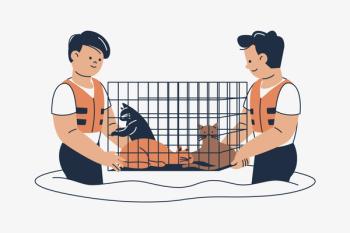
The anatomy of a better quality-of-life conversation
Lap of Love Veterinary Hospice cofounder Dr. Mary Gardner breaks the daunting discussion into thoughtful categories that ideally result in a more informed, less burdensome decision.
If the way in which you approach quality-of-life discussions is putting too much pressure on either you or the client, Mary Gardner, DVM, has good news: There’s a better way.
Instead of having the client fully rely on your professional expertise (as if the decision is always black and white) or telling the client to let you know when they’re “ready” (whatever that means), the cofounder of Lap of Love Veterinary Hospice advocates for breaking the conversation down into thoughtful categories that will allow for a more equal distribution of the decision-making load.
Here’s what she covers with the pet owner when assessing a pet’s quality of life:
The pet’s disease, injury or illness. “Look at the disease or ailment the pet is facing, because depending on that, the quality of life could change,” says Dr. Gardner. For example, the conversation around a dog in heart failure will be different than for a dog with arthritis. “What they experience—even the way they die—will be different,” she explains. In other words, discussing the pet’s quality of death is an important part of the conversation as well.
The pet’s personality. Every animal is different, so we have to look at the pet’s personality and how it’s handling its ailments, says Dr. Gardner. Some questions to explore: How does the pet handle pain? Anxiety? How does it respond to the types of tools and treatments it would require (e.g. harnesses, subcutaneous fluids)?
The pet owner’s personality. Every client is different, too, so you’ll need to get a sense of how they’re handling their pet’s ailments and whether or not they’re willing and able to manage the treatment regimen as well. For example, Dr. Gardner says some owners aren’t willing to administer subcutaneous fluids or strap their pet into a harness every time they need to go outside. “And some families want to say goodbye sooner rather than later,” she adds. That means you’ll need to find out if your client would rather euthanize their pet a week too soon or a day too late.
The pet owner’s budget. Don’t avoid the elephant in the room, even if it makes you cringe. A caring-but-cash-strapped client may even feel relieved to hear you bring it up and treat it as a valid part of the discussion. “But remember, it’s not just about the money. The other budgets to consider are time, physical and emotional. If an owner is tapped out of any of the four budgets, I support their decision to say good bye,” says Dr. Gardner.
In the figurative and literal end, the decision of when to euthanize will still be difficult. But by bringing together both the expert in veterinary medicine (you) and the expert on the pet (your client), that decision should be better informed and hopefully less burdensome to everyone involved.
Editor's note: This article is based on a dvm360.com video featuring Mary Gardner, DVM.
Sarah Mouton Dowdy, a former associate content specialist for dvm360.com, is a freelance writer and editor in Kansas City, Missouri.
Newsletter
From exam room tips to practice management insights, get trusted veterinary news delivered straight to your inbox—subscribe to dvm360.




